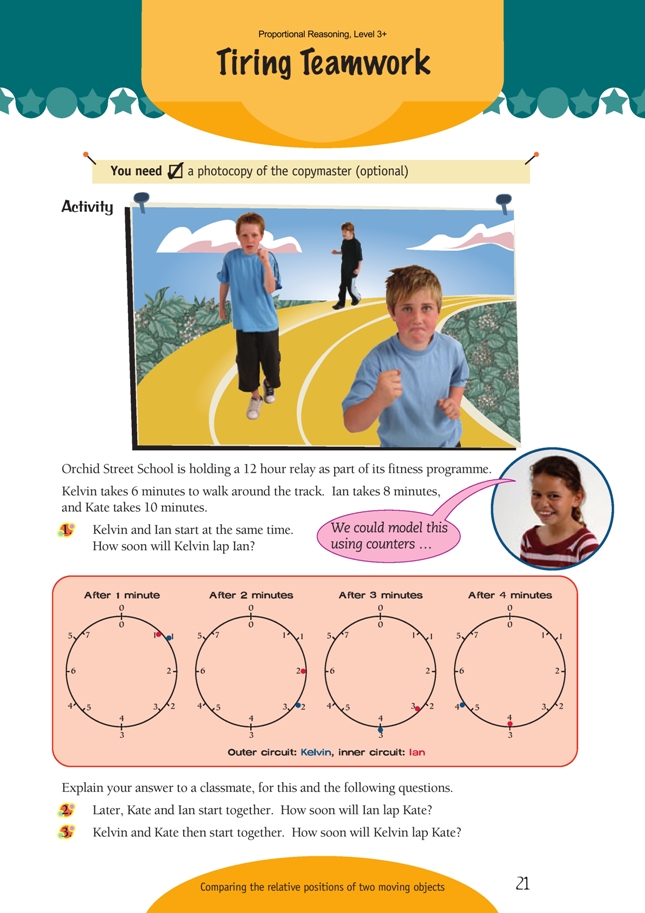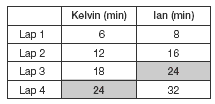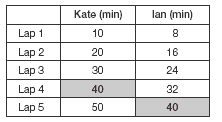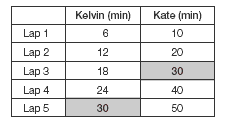This is a level 5 number activity from the Figure It Out series. It relates to Stage 8 of the Number Framework.
A PDF of the student activity is included.
Click on the image to enlarge it. Click again to close. Download PDF (1120 KB)
compare positions of objects moving at different rates
Number Framework Links
Use this activity to help students learn to solve problems with the use of fractions, proportions, and ratios (stages 7 and 8).
This problem-solving activity requires students to work out how long it would take walkers walking at different speeds to lap each other. Give your students every chance to solve the problems themselves, working in pairs or groups of no more than four. There are at least three strategies that they could use: a circular diagram, a double strip diagram, and a table.
The student book suggests using a circular diagram with counters to represent the walkers. Alternatively, students could mark a copy of the copymaster, using a pencil. A teaching clock face would serve the same purpose as long as the hands can be moved independently to represent the two walkers.
If they use a circular diagram, students may find it easier to focus on where the slower walker is when the fastest walker completes a lap rather than plot minute-by-minute progress as suggested in the student book. In question 1, Kelvin takes 6 minutes and Ian 8 minutes, so where would Ian be when Kelvin has completed a circuit? Expressed differently, if Ian takes 8 minutes to do 1 lap, where is he after 6 minutes? After 6 minutes, he has completed 6/8 or 3/4 of a lap. After 12 minutes, Kelvin has completed 2 laps and Ian 2 x 3/4 = 1 1/2 laps.
After 24 minutes, Kelvin will have completed 4 laps and Ian 4 x 3/4 = 3 laps, so at that point, Kelvin is exactly 1 lap ahead of Ian.
The Answers show how the same information can be pictured using a double strip diagram.
Using the third suggested strategy, a table for question 1 could look like this:
The table shows that, after 24 minutes, Kelvin has completed 4 laps and Ian 3.
A table for question 2 shows that, after 40 minutes, Ian has completed 5 laps and Kate 4.
A table for question 3 shows that, after 30 minutes, Kelvin has completed 5 laps and Kate 3. This means that Kelvin is now 2 laps ahead, so he must have lapped Kate at the 15 minute point:
Answers to Activity
1. 24 min. A double strip diagram shows that it takes this long for Kelvin to get 1 complete lap ahead of Ian (4 laps to 3):
2. 40 min. After this time, Ian is 1 complete lap ahead of Kate (5 laps to 4):
3. 15 min. This is a little harder to see on a strip diagram, but after 30 min, Kelvin is exactly 2 laps ahead of Kate (5 laps to 3), so after 15 min, he must be exactly 1 lap ahead (2 1/2 laps to 1 1/2 ).






